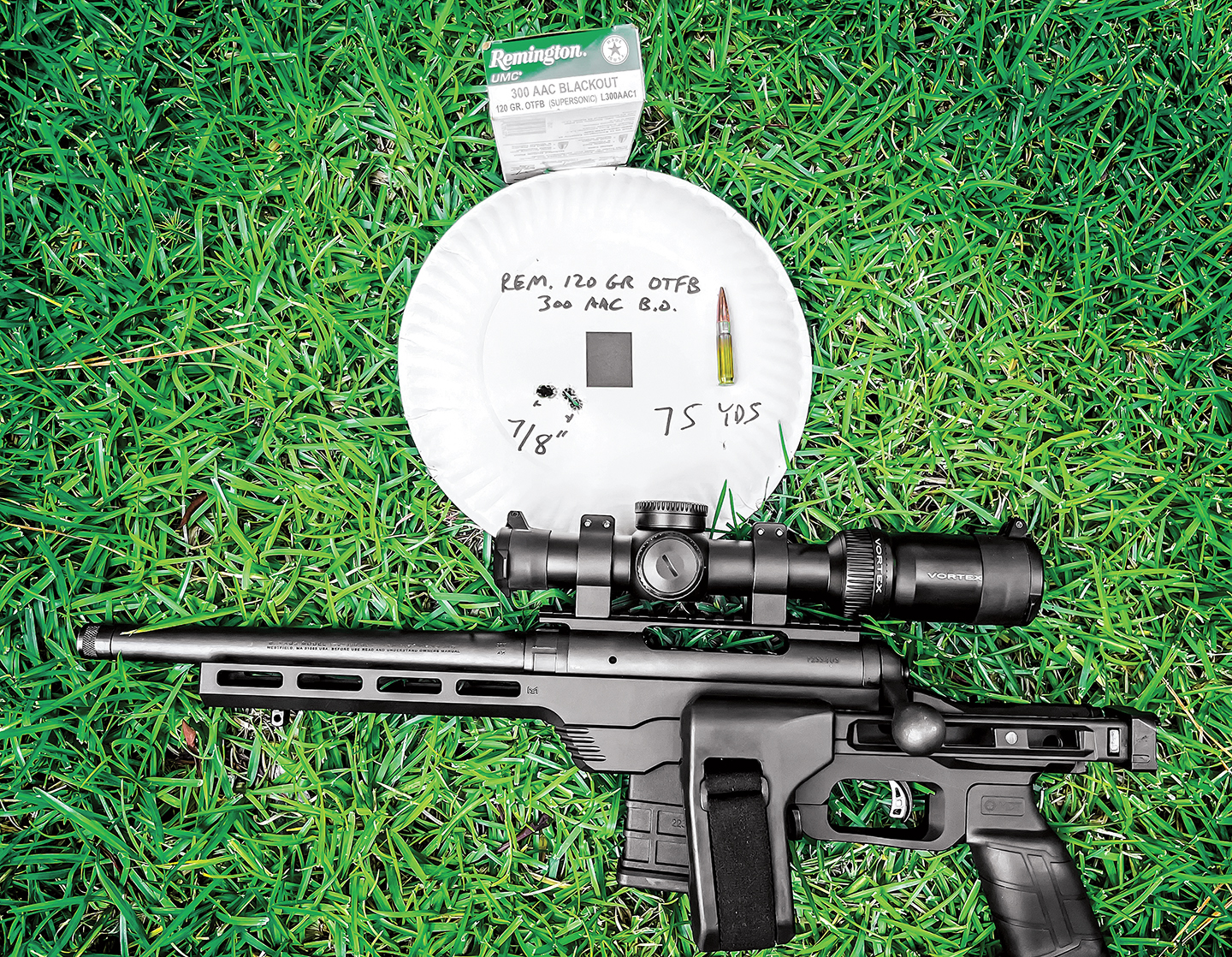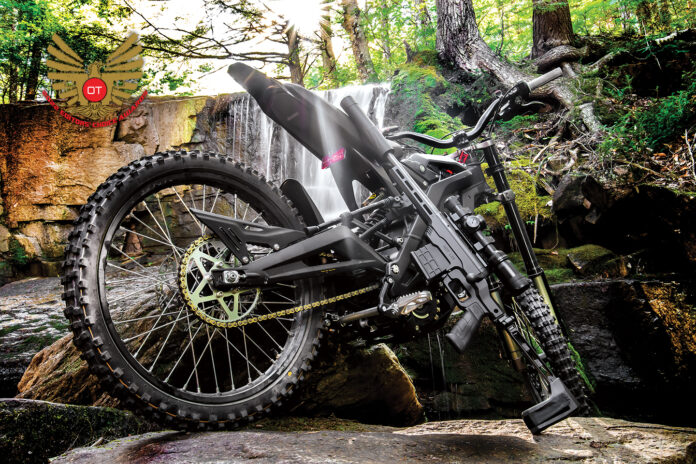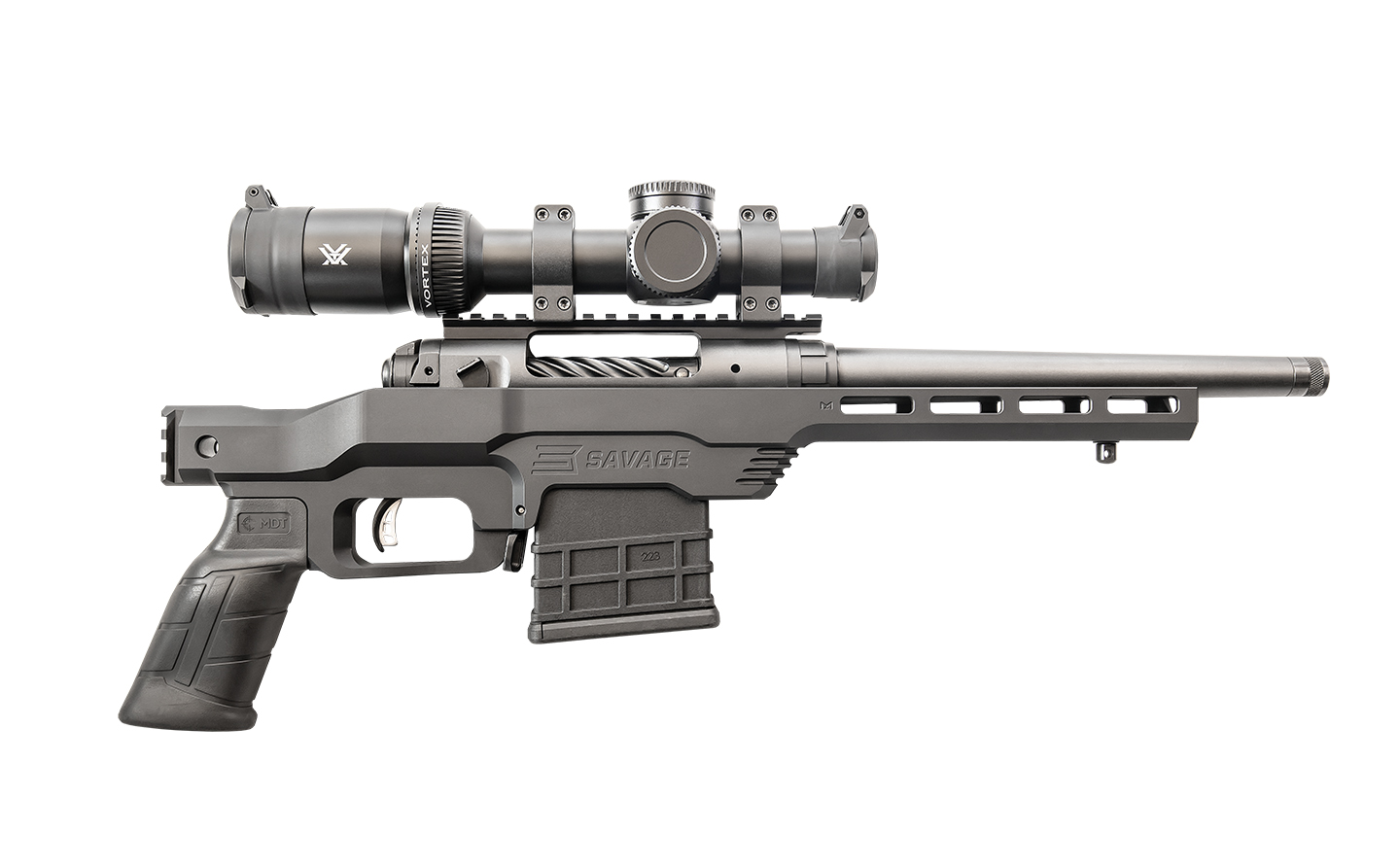2022 Editors’ Choice Award Winning
Savage Mo. 110 PCS pistol
By Guy Coursey
An easily-packable & suppressor-ready 300 BLK bolt gun
The Savage 110 PCS (Precision Chassis System) bolt-action pistol is, if not a unicorn, something pretty close to it. The PCS is built around the patented carbon steel Savage 110 action, which sits inside a one-piece Cerakoted aluminum chassis from Modular Driven Technologies (MDT). The MDT chassis features Magpul compatible M-LOK slots on either side of the 7-inch forend and three on the underside and its pistol grip is interchangeable with almost any grip found on a standard AR-15. The barrel in all five chamberings is 10.5
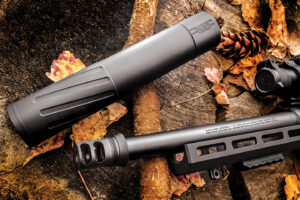
inches long and free floated; our 300 BLK test gun was given a 1:8 5R twist, with a capped 5/8 inch-24 muzzle for direct threading of a suppressor. The rear end of the chassis has a small machined-in Picatinny rail section meant for hosting a pistol brace or a fixed stock for those who may want to deal with the extra red tape of registering an SBR. We mounted SB Tactical’s (sb-tactical.com) FS1913 foldable brace for testing. The bolt on the Savage 110 PCS is spiral fluted, with the bolt handle on the left but ejecting to the right. This is ostensibly so right-handers can maintain their grip and sight picture while running the bolt with the left hand. Wrong-handers are, as usual, forced to conform to a right-handed world. A zero-degree Picatinny scope rail sits atop the action for mounting of various optics. The Savage 110 PCS is fed from a sturdy synthetic box magazine that holds up to 10 rounds and is released by pushing forward on the ambidextrous-paddle system at the rear of the magwell. Last but certainly not least, the 110 PCS has Savage’s highly regarded, adjustable AccuTrigger with a user-adjustable pull weight from 2.5 to 6 pounds.
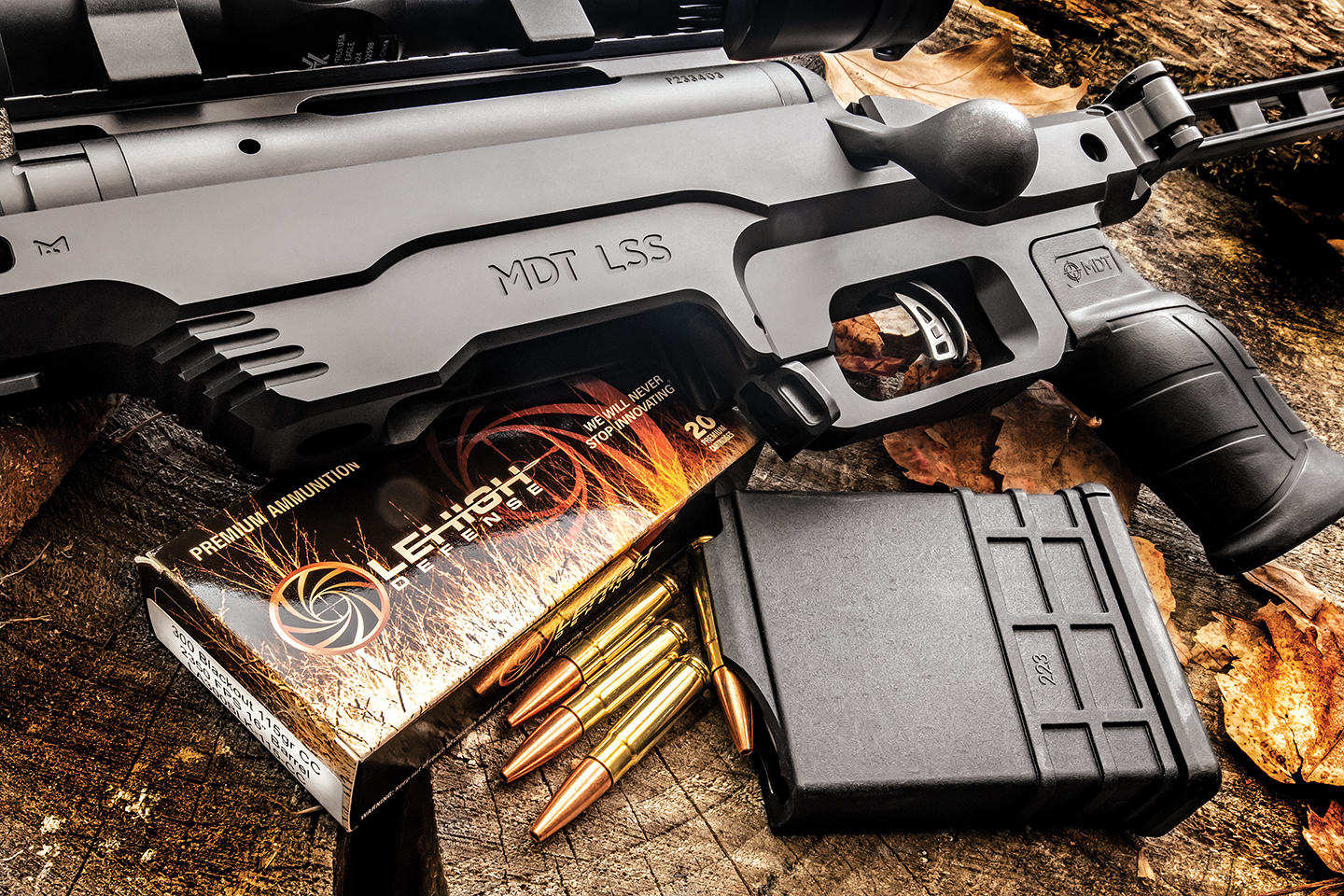
Unloaded and sans optics, the 110 PCS comes in at 5.6 pounds and is a very compact 21.5 inches long, easily fitting in a medium-sized backpack. It also is available in .223 Remington, 6.5 Creedmoor, .308 Winchester, and .350 Legend. While I have shot all the above, I am partial to .300 Blackout, as the recoil is manageable for a bottleneck .30
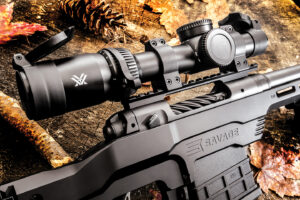
caliber round, and it does well on pigs and whitetail deer with the right load. That said, several factors influenced my testing. First, my copy of the 110 PCS came topped with a new-for-2022 Vortex Strike Eagle 1-8x power FFP scope with an AR-BDC3 reticle and throw lever in Talley rings. Accuracy testing took place at 75 versus 100 yards. In heavier calibers, the Savage 110 PCS can regularly ring steel in excess of 500 yards, but I chose 75 yards as the rough ballistic median for .300 Blackout, which typically will be good out to about 150 yards although capable of going further. I shot off a Caldwell bag rest using four different supersonic flavors of .300 Blackout, including Magtech 123gr FMJ, Hornady 110gr GMX, Armscor 147gr FMJ, and Remington 120gr OTFB. In addition, I also had some S&B 200gr FMJ subsonic just to see the difference in recoil and POI on the target. After some initial dialing in with Magtech, 5-round groups from the supersonic rounds averaged in the one to two-inch range. Top honors went to the Remington load, with a best group of just 7/8ths of an inch, about an inch left and low of center. The S&B subsonic grouped into two inches, centered seven inches low and just left of the POA. Recoil was moderate with the .300 Blackout supersonic loads but predictably negligible with the subsonic. The spiral bolt was easy to run with my left hand, with positive feeding and extraction. No malfunctions of any kind were noted.
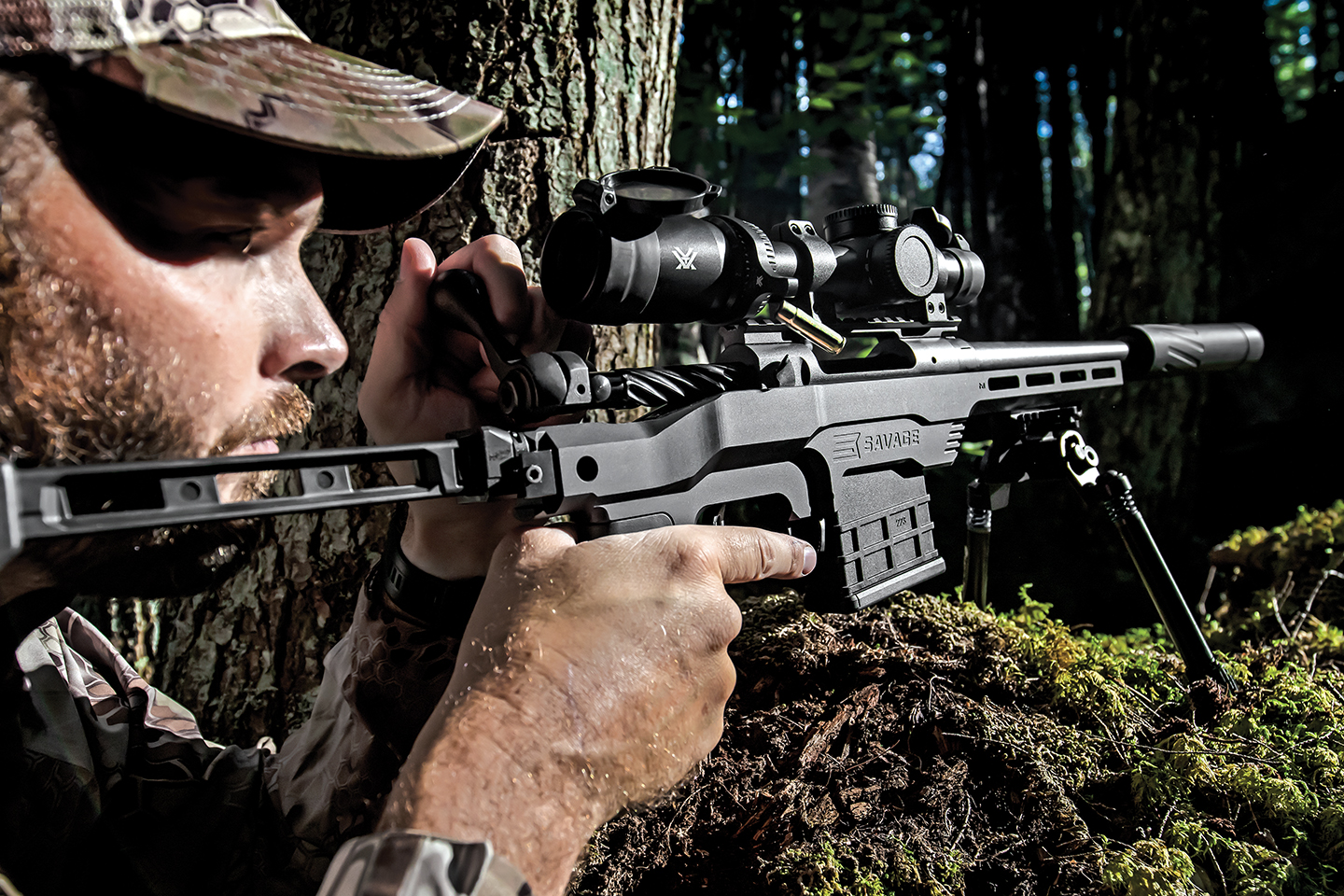
I came away from my testing of the Savage 110 PCS seriously impressed. If not a unicorn, it is a highly unusual, attractive, and interesting firearm. It features power, light weight, and compactness all in one configurable package. For those hunters or recreational shooters who desire these qualities in their firearms, the Savage 110 PCS is worth a very hard look — especially at $999 MSRP. Check it out at your nearest dealer, or for more information, contact Savage Arms; Tel.: (800) 370-0708; Web: www.savagearms.com.
Specifications:
- Caliber: 300 BLK, as tested
- Action Type: Bolt action
- Trigger: Adjustable
- Rate of twist: 1-8, 5R
- Barrel: 10.50-inch medium contour
- Finish: Matte black
- Stock: MDT aluminum chassis
- Magazine/capacity: Detachable, 10+1
- Sights: None; Picatinny rail installed
- Overall Length: 21.50 inches
- Weight: 5.625 pounds
- MSRP: $999
